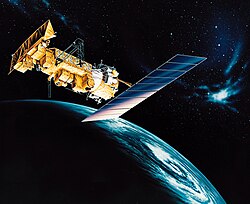References
- ↑ "NASA/NSSDC ITOS-E1 spacecraft details" . Retrieved June 7, 2018.
- ↑ McDowell, Jonathan. "Launch Log". Jonathan's Space Page. Retrieved June 7, 2018.
- ↑ Wade, Mark. "ITOS". Encyclopedia Astronautica. Archived from the original on June 21, 2002. Retrieved June 7, 2018.
TIROS satellites | ||
|---|---|---|
| TIROS | ||
| TOS | ||
| ITOS | ||
| TIROS-N | ||
| Adv. TIROS-N | ||
| | This spacecraft or satellite related article is a stub. You can help Wikipedia by expanding it. |
